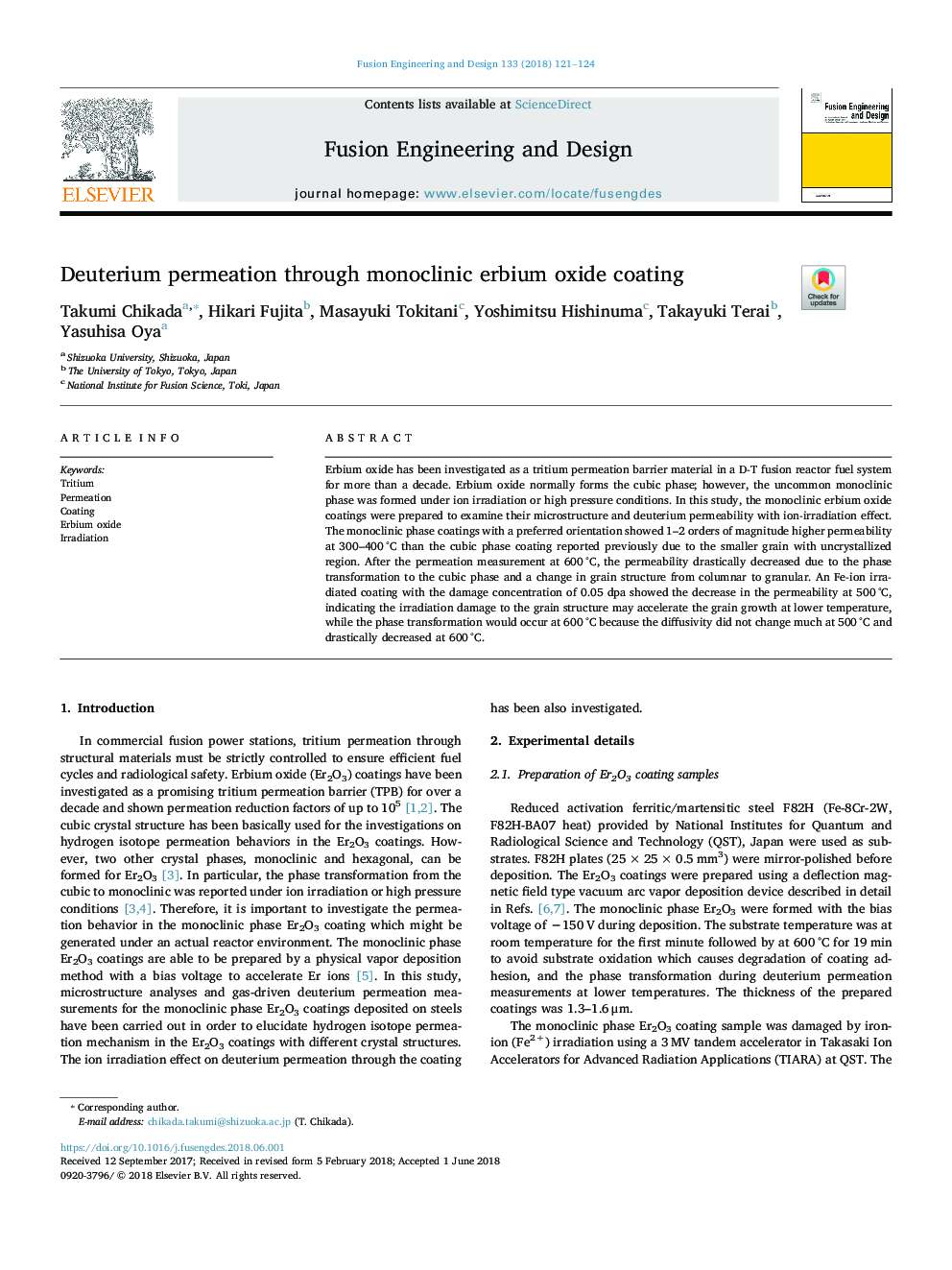| Article ID | Journal | Published Year | Pages | File Type |
|---|---|---|---|---|
| 6742939 | Fusion Engineering and Design | 2018 | 4 Pages |
Abstract
Erbium oxide has been investigated as a tritium permeation barrier material in a D-T fusion reactor fuel system for more than a decade. Erbium oxide normally forms the cubic phase; however, the uncommon monoclinic phase was formed under ion irradiation or high pressure conditions. In this study, the monoclinic erbium oxide coatings were prepared to examine their microstructure and deuterium permeability with ion-irradiation effect. The monoclinic phase coatings with a preferred orientation showed 1-2 orders of magnitude higher permeability at 300-400â¯Â°C than the cubic phase coating reported previously due to the smaller grain with uncrystallized region. After the permeation measurement at 600â¯Â°C, the permeability drastically decreased due to the phase transformation to the cubic phase and a change in grain structure from columnar to granular. An Fe-ion irradiated coating with the damage concentration of 0.05 dpa showed the decrease in the permeability at 500â¯Â°C, indicating the irradiation damage to the grain structure may accelerate the grain growth at lower temperature, while the phase transformation would occur at 600â¯Â°C because the diffusivity did not change much at 500â¯Â°C and drastically decreased at 600â¯Â°C.
Related Topics
Physical Sciences and Engineering
Energy
Energy Engineering and Power Technology
Authors
Takumi Chikada, Hikari Fujita, Masayuki Tokitani, Yoshimitsu Hishinuma, Takayuki Terai, Yasuhisa Oya,
